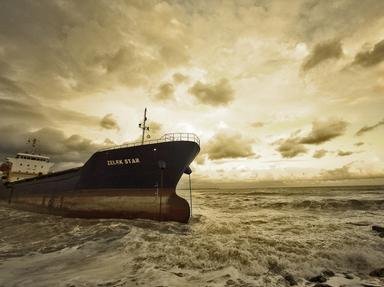Quiz Answer Key and Fun Facts
1. Purchased from England, fired upon by the Russians, exploded and sunk in port after the war ended, repainted in 2009 by sailors of the USS Nimitz - she is the only surviving example of a pre-dreadnought battleship. Can you name her?
2. Which of the following ships - built as a collier (coal carrier) for the US Navy - was lost with ALL HANDS in the infamous "Bermuda Triangle?
3. What 20th-century event marked the greatest loss of vessels in a single day since the advent of steel ships?
4. Every naval vessel faces potential damage or destruction from enemies in wartime; it's an occupational hazard. But destruction in your own harbor? With no enemy in sight? What common misfortunes - separated by 26 years and half a world - ended the careers of battleships HMS Vanguard & IJN Mutsu?
5. American destroyers (abbreviated "DD") Hull (350), Monaghan (354), and Spence (512), were built in different years, at different US shipyards. But bad luck, poor planning, and fate conspired to write them a common final chapter. What happened?
6. The light cruiser USS Phoenix (CL-49) was commissioned in 1938. What was her ultimate fate some 44 years later?
7. What common thread links the fates of USS Merrimack, USS Stewart (DD-224), and USS Pueblo (AGER-2)?
8. Her 1989 oil spill is ranked as the 2nd worst in US history and as the 54th in world history. Name the ship and her ultimate fate. The key word here is "ultimate."
9. This ship was originally built for the US Army, but manned by a Coast Guard crew, and was ultimately given to the US Navy. She has not been in US waters since 1967. What's her name and what was her fate?
10. She served her country honorably for 27 years, but collisions that sunk two destroyers gave her an unfair reputation as a jinxed ship. Can you name the ship?
Source: Author
goatlockerjoe
This quiz was reviewed by FunTrivia editor
trident before going online.
Any errors found in FunTrivia content are routinely corrected through our feedback system.

